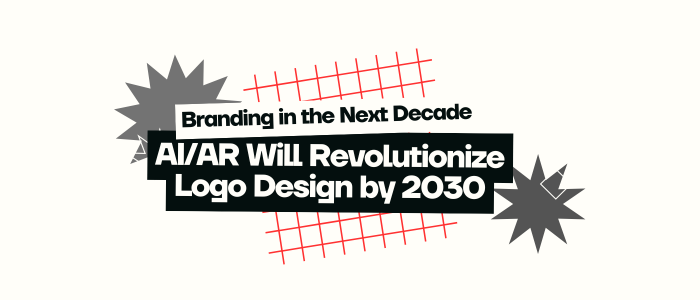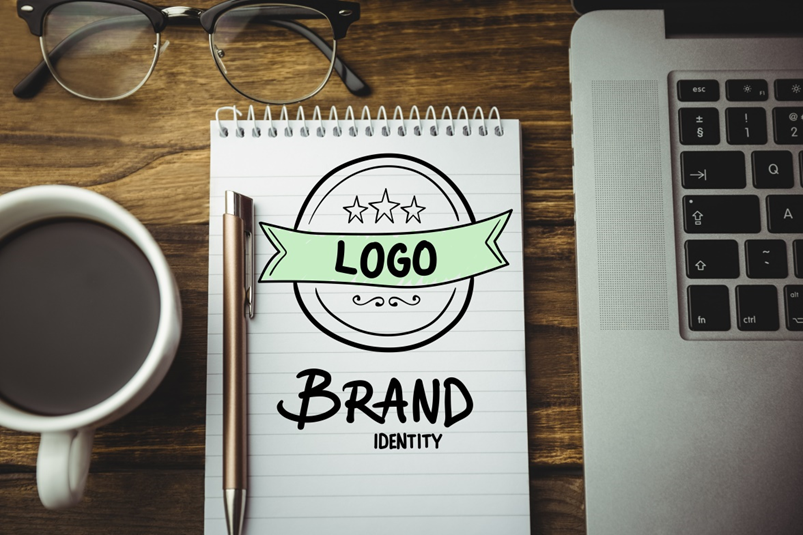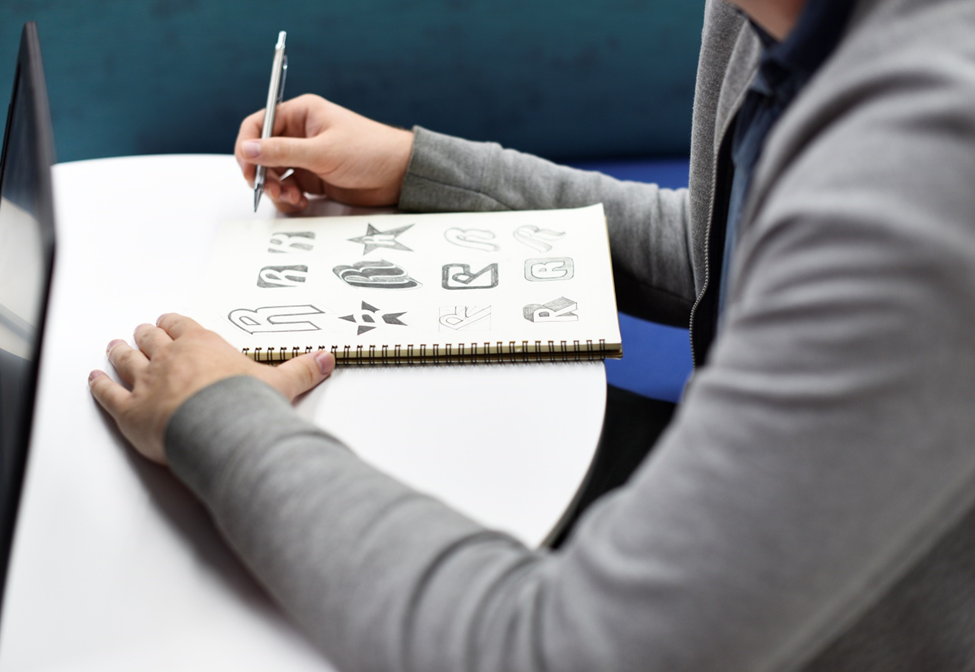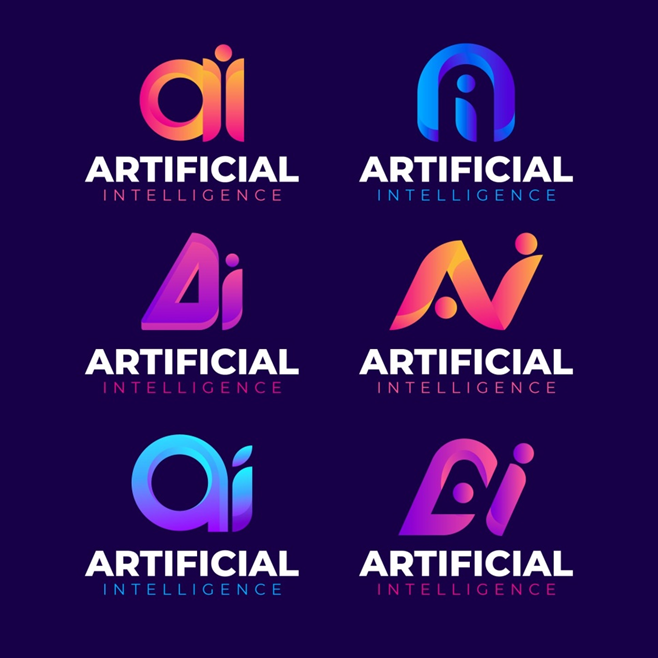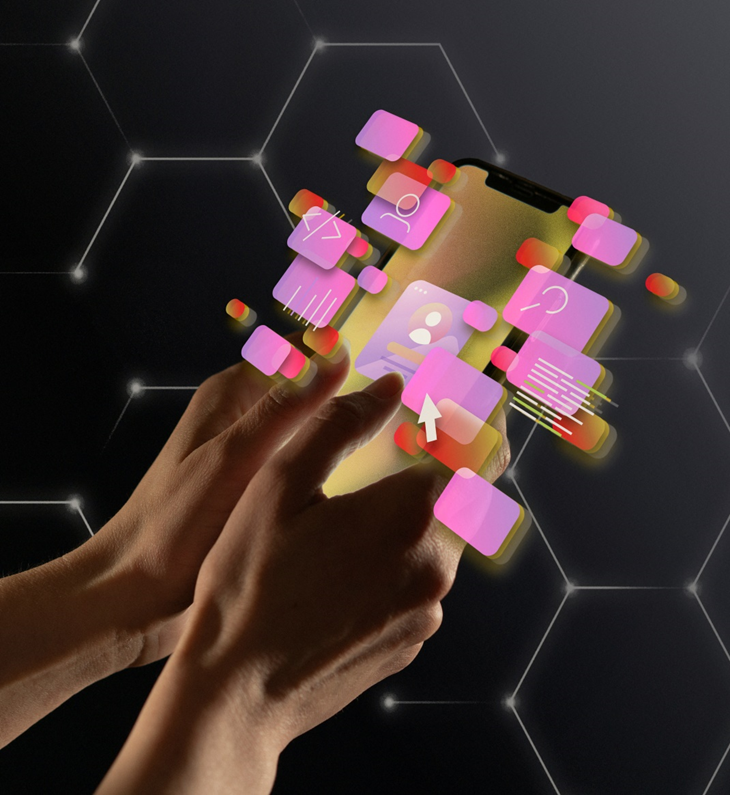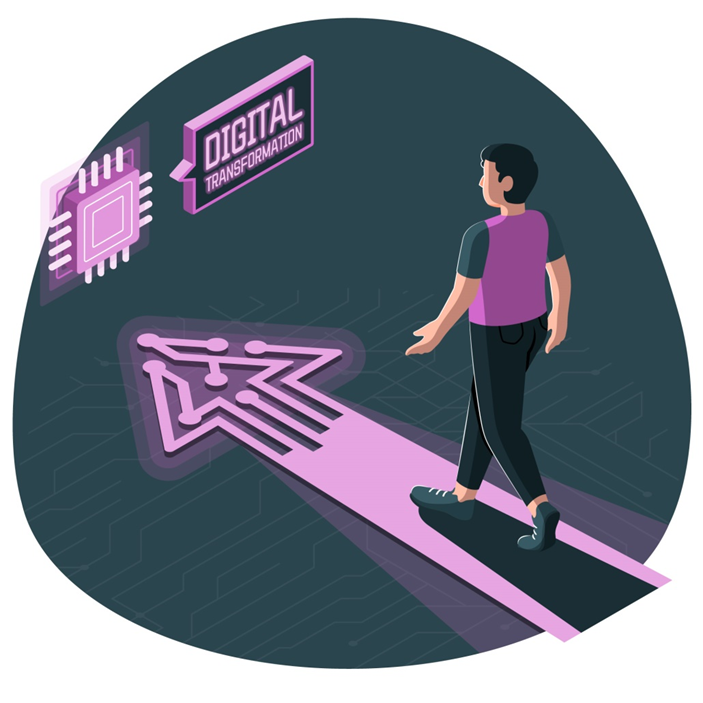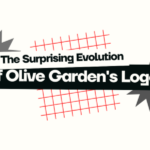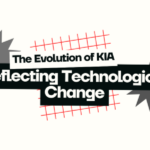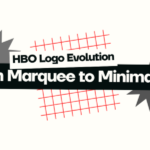Brand development changes every single day, and the driving forces behind it are augmented reality (AR) and artificial intelligence (AI). By 2030, these AI & AR will significantly change how companies design logos and establish brand identity.
For youth brands, that translates to dramatic, attention-seeking imagery—geometric patterns and trendy typography for dynamic logos that change in real-time. Walking into a store and seeing the logo of a brand jump off a wall through AR glasses or a smartphone app is the dream.
The clients may engage with 3D logos, animation, or virtual try-on. Gucci, for example, already provides clients with the option to view how clothes fit through AR, thus eradicating the need for actual trials.
Branding in 2030 will look entirely different compared to what exists today. Those that don’t adopt these latest innovations stand a chance of lagging. Instead, those that take advantage of the capability of AI and AR will be at the helm, connecting with customers in deeper, wiser, and more interactive ways than ever.
Looking to stay ahead in branding? Dive into: Top 7 Logo Design Trends of 2025 Revealed
Introduction: Sketch to Smart Logos
The art of designing logos has changed immensely over time. Long ago, logos used to be sketched manually. Artists would take pencils and pens to draw pictures that symbolized a brand. The logos used to be crude, but required much time and expertise to complete them flawlessly.
And then something revolutionary happened: computers! Designers started using computer programs to create logos with speed and precision. Designers could create logos in a thousand different forms, sizes, and colors!.
But logo design is evolving again! New technologies such as Artificial Intelligence (AI) and Augmented Reality (AR) assist designers in making great logos. AI provides suggestions and assists in logo design. AR brings logos to life in an entertaining manner. They can change or move when viewed using a smartphone.
Thesis:
Logotype design will differ significantly by the year 2030 due to technologies such as Artificial Intelligence (AI) and Augmented Reality (AR).
These technologies will change how logos are made. They will keep making it better for people to use logos and build relationships with the brand.
- Dynamic Logos: Today, logos remain the same after they are created. They do not change. With AI (Artificial Intelligence) and AR (Augmented Reality), logos can be made to change dynamically. A logo may appear differently based on who is viewing it, where it is being viewed, or even the time of day. For instance, a logo may change colors or forms based on what the viewer prefers.
- Interactive Logos: Logos in the future won’t just be static images on a website or billboard. AR will change logos into interactive ones. When you see them through a phone or AR glasses, they can move, change shape, or even present a 3D model of a product. This makes the logo experience more thrilling and enjoyable, almost like it is alive!
- Personalized Logos: AI allows you to generate logos specifically for yourself. The logos are configured to align with your personal preferences and behavior. You stroll down a store, and the logo adjusts for you. It may reflect what color you like or products. The AI can identify what individuals prefer and design logos that speak straight to them. That makes customer-brand interaction even stronger.
- Reforming Brand Identities: All these reforms will redefine the way brands present themselves to the world. Logos are an important part of a brand’s identity. Emerging technology allows brands to design logos that are distinctive, memorable, and fun. They can redesign their logos rather than using one forever. This is subject to what people prefer and how they interact with the logos.
- Improving Customer Experiences: with AI and AR in logo design will increase customer experience. Customers will no longer merely look at a logo. They will be included in it. The logo can be part of an extended, interactive experience.
“By 2030, AI and AR will make logo design dynamic, interactive, and personal. This will revolutionize logos to introduce a new customer experience.”
This article shows just how tremendously new technology is transforming branding. Logos will no longer be static pictures—they will be dynamic, moving parts of a brand story.
Visual Aid Suggestion: A timeline illustrating how logos have evolved: Hand-drawn → Computer-designed (vector logos) → AI-created → AR-interactive
Discussion Question: How would your favorite brand’s logo change according to your preferences and behavior?
AI-Driven Logo Design: Key Innovations
AI creates logos quickly and affordably. It learns what individuals like and discovers trending designs. It can even create logos that suit what every individual likes.
- Generative AI and Automation
Generative AI is changing logo design. It makes creative tasks easier, looks at big data, and creates new design ideas.
Tools like Adobe Firefly, Looka, and Tailor Brands lead this change. They help businesses, big and small, create logos in just seconds. They leverage intelligent machine learning to enhance designs. They enable faster logo creation and make it more personal and effective.
- From Templates to Custom Creativity: AI software generates original designs. They achieve this by employing brand characteristics like tone, industry, and audience.
- Real-Time Feedback Loops: AI can rapidly enhance logos through user feedback. This eliminates the necessity for numerous manual revisions.
- Market Growth: The AI logo design market is thriving. It’s set to grow from 0.1 billion in 2028 to 0.4 billion by 2033, as shown by Grand View Research.
“AI makes tasks faster and helps creativity. It gets rid of boring work and lets people think more carefully.”
Discussion Question: Should designers be afraid that AI might take their jobs, or should they see it as a tool to help them work faster?
Discover how tech and creativity collide in branding: AI Logo Design: Automation vs. Human Touch in 2025
Extended Use Case: Netflix’s Dynamic Thumbnails
Netflix leverages AI to personalize thumbnails for its viewers. It selects color palettes or styles based on what viewers like or where they live. A global brand can use different logo versions in each region.
The branding potential of AI is huge. Market reports predict the AI logo design market will increase from $0.1 billion in 2028 to $0.4 billion by 2033, marking a significant move towards automated, data-driven creative strategies.
For a deeper dive into how brands can adapt their visual identities across regions using AI, see our guide on Localized Branding – Designing Logos for Regional Markets.
Visual Aid Suggestion: Flowchart comparing template-based design vs. AI-assisted dynamic design process.
Hyper-Personalization in Action: Spotify Wrapped
The popularity of Spotify Wrapped shows how consumers crave personalized experiences. In logo design, this could mean logos that change. They might adapt based on a customer’s interactions, recent purchases, or even their mood. Wearable tech or voice tone could help detect these feelings.
- Ethical and Creative Challenges
Despite its power, AI raises several red flags:
- Homogenization: Over-reliance on trends may lead to generic outputs.
- Originality concerns: Where does inspiration end and plagiarism begin?
- Loss of storytelling: Logos needs emotion, symbolism, and narrative—areas where humans excel.
The best results come from working with AI, not against it.
“AI can generate a logo, but it can’t infuse it with the heart and history that only a human storyteller can.”
“AI might draft the framework, but humans breathe soul into a logo.”
Discussion Question: How do you mix machine efficiency with creative authenticity in your design work?
AR’s Role in Interactive Brand Experiences
- Dynamic Logos in Augmented Reality
AR tools such as Zappar, 8thWall, and AR Code make brand logos come alive. They turn static images into fun and engaging experiences.
Here’s how:
- A logo on a product package can launch a gasified story
- Storefront signage can overlay interactive offers
- Business cards become animated brand intros
Example: A coffee shop logo on a cup can trigger a virtual tour of their bean-sourcing farms through AR.
Discussion Question: How do AR logos that change affect how people notice and connect with brands when they’re in public?
Visual Aid Suggestion: Create a diagram. Show a user scanning a logo on a product. Then, display the AR overlay with interactive elements appearing.
- Immersive Brand Storytelling
AR enables logos to act as gateways to emotional storytelling. Brands can now:
- Blend narrative with interaction (e.g., virtual test drives from car logos)
- Humanize complex processes (e.g., Coca-Cola’s virtual factory tours[^2])
- Let customers “step into” brand worlds (e.g., IKEA’s AR room planner)
Discussion Question: How can AR storytelling with logos strengthen the bond between a brand and its audience?
- Mobile-First and Metaverse Integration
As mobile takes the lead and the metaverse grows, brands need logos that are:
- Adaptive to 3D spaces
- Interoperable with AR/XR environments
- Owned as NFTs for authentication and monetization
“AR turns logos into living, breathing experiences that deepen emotional engagement.”
With the NFT market projected to reach $231 billion by 2030, brands must create logos that are versatile across both physical and digital environments. As assets increasingly exist in virtual spaces—from NFTs to metaverse storefronts—logo design needs to adapt to formats that are immersive, interactive, and scalable.
Discussion Question: Can your brand logo succeed on AR glasses, mobile apps, and metaverse platforms?
For fresh ideas, see our: Will AI Replace Logo Designers? [7 Reasons why it won’t]
Synergy of AI and AR in Future Branding
Imagine this: It’s 2030. A retail brand’s logo changes in real time. It adapts its shape and color based on user mood, local weather, or current events. In AR, the logo shows the company’s commitment to sustainability. It can also show a personalized video greeting.
Case Study: The Adaptive Eco-Logo
- AI in Action: An eco-brand’s logo changes to cooler tones during heat waves, signaling climate awareness.
- AR Overlay: When scanned, the logo reveals live environmental data or tree planting milestones.
Optimization through AI
Machine learning algorithms can fine-tune AR interactions:
- Adjust animation speed for better user focus
- Highlight features based on user history
- Predict interaction timing to reduce lag
“Together, AI and AR make branding not just visual, but visceral.”
Visual Aid Suggestion: Create a mockup of an AI-AR logo. Include callouts like mood-reactive colors and tappable AR facts.
Discussion Question: What might a ‘living logo’ for your brand look like? What experience should it create?
Challenges and Considerations
AI and AR-driven logo design comes with several challenges. First, ensure originality. Brands need to stay consistent across platforms. They must address ethical concerns, too. User privacy is a big issue. Balance automation and human creativity.
Technical Barriers
- High development costs for AR platforms
- Limited access to quality AI training datasets for niche industries
- Device compatibility concerns across mobile, wearables, and AR headsets
Ethical Concerns
- Data privacy in personalized experiences
- Bias in AI algorithms trained on Western-centric design norms
- Environmental impact of large-scale digital rendering and blockchain storage
Human-AI Collaboration
Designers can future-proof their role by:
- Using AI for idea generation and variation testing
- Retaining narrative control and emotional intelligence
- Acting as ethical gatekeepers of brand authenticity
“The best logos of 2030 will be born from a dance between human intuition and machine intelligence.”
Tip: Combine generative AI with your mood boards or story-driven frameworks to stay creative and in control.
Discussion Question: As AI evolves, how will your creative process evolve with it—and where will you draw your red lines?
Future Predictions: The Road to 2030
By 2030, AI and AR will change branding. Logos will become dynamic, interactive elements. They will adapt to individual choices and present circumstances. Brands will use AI to design personalized logos quickly.
AR will deliver enjoyable, interactive 3D experiences to consumers. Logos will become flexible identities. They will transition nicely across different platforms and environments. Ethics and sustainability are important. AI will assist in the creation of design practices aimed at care for the environment and simplicity.
As technology grows, digital and physical branding will mix. Brand experiences will become more integrated and personal than ever. Likewise, by the end of this decade:
- Most of the first logo drafts, about 80%, will come from AI. This will allow designers to concentrate more on strategy and optimizing the designs.
- 70% of brands will use AR logos. This will improve product interaction and virtual shopping stores.
- Ethical AI frameworks and blockchain will verify logo originality and inclusivity.
- AI will change from a design helper to a creative partner. It will even update logos after they launch.
- AR will be the standard for finding brands in the metaverse, retail, and education.
- Global regulation of AI-generated content will redefine IP law for creative industries.
- Digital twins of logos will be standard. Each logo will have a physical, digital, and AR version.
Discussion Question: What forecast about branding in 2030 excites or concerns you the most?
Traditional logos may feel outdated and out of touch in a time of engaging, smart brand identities.
Conclusion: Building the Future with Confidence
AR and AI are transforming the very foundation of branding. Once the exclusive domain of multinational conglomerates with large design budgets, these technologies now give businesses of every size the power to create logos that are distinct, diverse, and deeply personalized.
Logos today are not fixed visual identifiers—they’re interactive, immersive moments. They engage the gaze, they trigger feelings, and they change based on where you are. Branding isn’t just recognition anymore. It’s about conversation, personalization, and emotional connection.
We’re now just a few years away from 2030, and the real question is not whether your brand will adopt AI and AR, but how quickly you can bring them into your brand identity.
Ready to future-proof your brand?
Partner with Logovent —an innovative creative agency that provides brands with AI precision and AR immersion without the hassle of developing the tech. Logovent doesn’t create logos; it nurtures living brand experiences that grow, react, and interact with your audience.
“Your brand deserves more than a logo. It deserves a story that evolves—with AI precision and AR immersion.”
For actionable tips on how to evolve your visual identity, see our How to Get a Logo: The Ultimate Guide for 2025
Discussion Question: What can you do today to guarantee your logo thrives for the next decade?
Next Step…
Work with Logovent to create a logo that not only defines your brand, it reacts, speaks, and evolves with it.
Begin changing your brand today at Logovent.com.
Key Takeaways
- AI is personalizing and automating the creation of logos in large quantities.
- AR makes logos interactive storytelling platforms.
- By the year 2030, 80% of logos will be AI-created and AR-interactive.
- Moral and creative management is still important.
- Human designers remain irreplaceable for storytelling and feeling.
- AR-ready logos will rule mobile and metaverse platforms.
- The branding future is dynamic, data-driven, and intensely personal.
